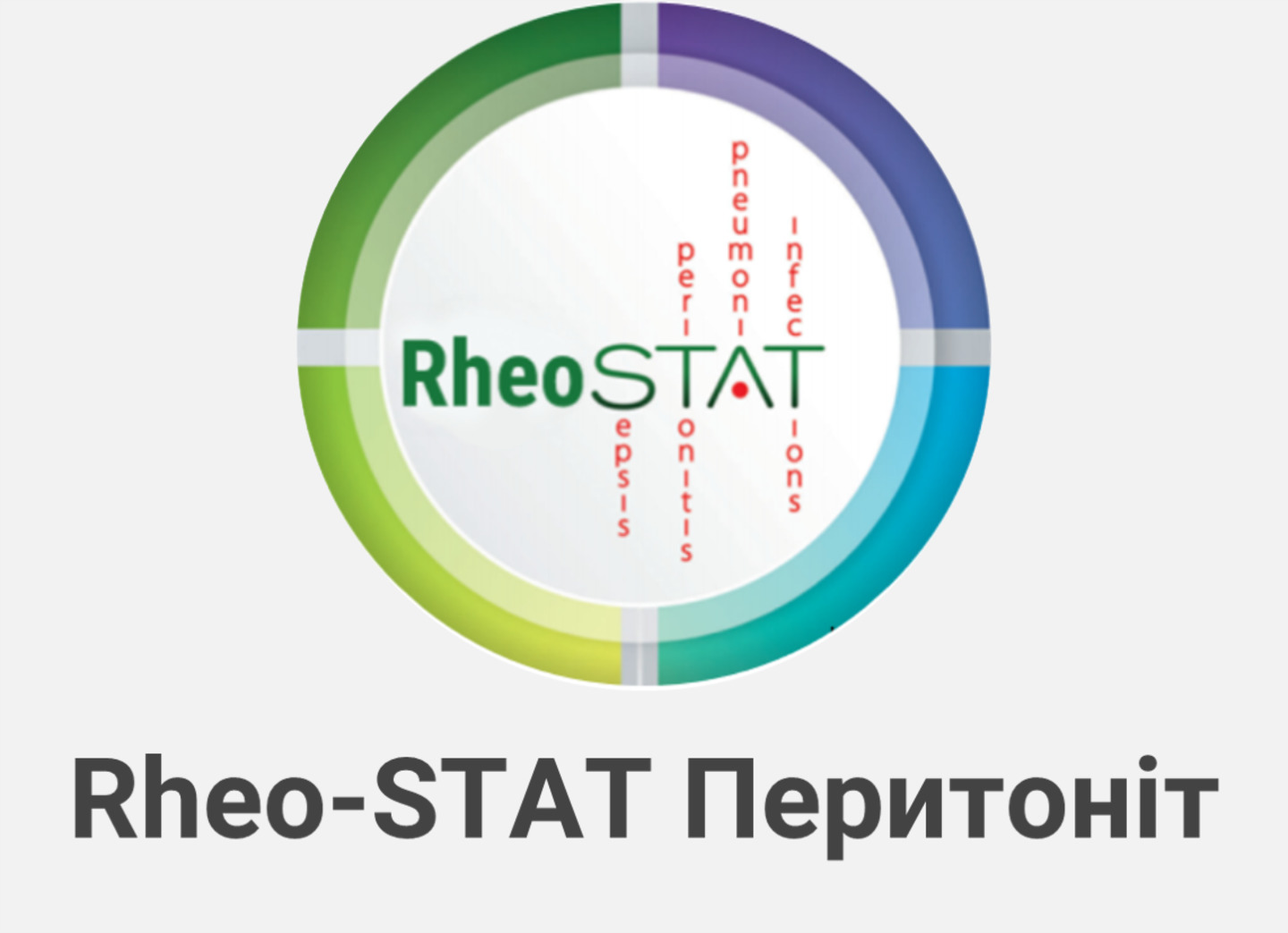Efficacy of moxifloxacin in the treatment of communityacquired pneumonia
The review article presents the results of domestic and international studies of the use of fluoroquinolone 4th generation Moxifloxacin in the treatment of community-acquired pneumonia and pneumonia caused by SARS-CoV-2. Analysis of the clinical use of moxifloxacin in the treatment of infectious complications of the respiratory tract indicates its high efficiency and bioavailability, low risk of resistance, which allows to recommend it for widespread use in the work of a practitioner. And generic Maxicin (Yuriа-Pharm), which is available as a concentrate of 20 mg / ml in a vial of 20 ml, can significantly reduce the cost of treatment and optimize infusion therapy by choosing both volume and solvent.
Key words: COVID-19, moxifloxacin, pneumonia, restrictive infusion therapy, fluoroquinolones, treatment.
Authors:
Dmitriev D. V., Nazarchuk O. A., Babina Yu. M., National Pirogov Memorial Medical University, Vinnytsia
Literature:
- Wiemken TL, Peyrani P, Ramirez JA. Global changes in the epidemiology of community-acquired pneumonia. Semin Respir Crit Care Med. 2012;33(3):213–219
- Polverino E, Torres MA. Community-acquired pneumonia. Minerva Anestesiol. 2011;77(2):196–211.
- Almirall J, Bolibar I, Vidal J, Sauca G, Coll P, Niklasson B, Bartolome M, Balanzo X. Epidemiology of community-acquired pneumonia in adults: a population-based study. Eur Respir J. 2000;15(4):757–763.
- Welte T, Torres A, Nathwani D. Clinical and economic burden of community-acquired pneumonia among adults in Europe. Thorax. 2012;67(1):71–79.
- Nair GB, Niederman MS. Community-acquired pneumonia: an unfinished battle. Med Clin North Am. 2011;95(6):1143–1161.
- Jackson ML, Neuzil KM, Thompson WW, Shay DK, Yu O, Hanson CA, Jackson LA. The burden of community-acquired pneumonia in seniors: results of a population-based study. Clin Infect Dis. 2004;39(11):1642–1650.
- Howard LS, Sillis M, Pasteur MC, Kamath AV, Harrison BD. Microbiological profile of community-acquired pneumonia in adults over the last 20 years. J Infect. 2005;50(2):107–113.
- Lieberman D, Schlaeffer F, Boldur I, Lieberman D, Horowitz S, Friedman MG, Leiononen M, Horovitz O. Multiple pathogens in adult patients admitted with community-acquired pneumonia: a one year prospective study of 346 consecutive patients. Thorax. 1996;51(2):179–184.
- Kuzman I, Bezlepko A, Kondova Topuzovska I, et al. Efficacy and safety of moxifloxacin in community acquired pneumonia: a prospective, multicenter, observational study (CAPRIVI). BMC Pulm Med. 2014;14:105. Published 2014 Jun 30. doi:10.1186/1471-2466-14-105
- Karampela I; Dalamaga M. Could respiratory fluoroquinolones, levofloxacin and moxifloxacin, prove to be beneficial as an adjunct treatment in COVID-19?. Archives of medical research, 2020, 51.7: 741-742.
- Hooper, D.C. Mode of Action of Fluoroquinolones. Drugs 58, 6–10 (1999). https://doi.org/10.2165/00003495-199958002-00002
- Tano E, Cars O, Lowdin E. Pharmacodynamic studies of moxifloxacin and erythromycin against intracellular Legionella pneumophila in an in vitro kinetic model. J Antimicrob Chemother. 2005;56:240–2.
- Pestova E, Millichap JJ, Noskin GA, et al. Intracellular targets of moxifloxacin: a comparison with other fluoroquinolones. J Antimicrob Chemother. 2000;45:583–90. [PubMed] [Google Scholar]
- Petitpretz P, Arvis P, Marel M, et al. Oral moxifloxacin vs high-dosage amoxicillin in the treatment of mild-to-moderate, community-acquired, suspected pneumococcal pneumonia in adults. Chest. 2001;119:185–95
- Soman A, Honeybourne D, Andrews J, et al. Concentrations of moxifloxacin in serum and pulmonary compartments following a single 400 mg oral dose in patients undergoing fibre-optic bronchoscopy. J Antimicrob Chemother. 1999;44:835–8.
- Capitano B, Mattoes HM, Shore E, et al. Steady-state intrapulmonary concentrations of moxifloxacin, levofloxacin, and azithromycin in older adults. Chest. 2004;125:965–73.
- Breilh D, Jougon J, Djabarouti S, et al. Diffusion of oral and intravenous 400 mg once-daily moxifloxacin into lung tissue at pharmacokinetic steady-state. J Chemother. 2003;15:558–62.
- Pea F, Pavan F, Lugatti E, et al. Pharmacokinetic and pharmaco-dynamic aspect of oral moxifloxacin 400 mg/day in elderly patients with acute exacerbation of chronic bronchitis. Clin Pharmacokinet. 2006;45:287–95.
- Balfour JA, Lamb HM. Moxifloxacin: a review of its clinical potential in the management of community-acquired respiratory tract infections. Drugs. 2000;59:115–39.
- Miravitlles M. Moxifloxacin in respiratory tract infections. Expert Opin Pharmacother. 2005;6:283–93
- Ball P, Stahlmann R, Kubin R, et al. Safety profile of oral and intravenous moxifloxacin: cumulative data from clinical trials and postmarketing studies. Clin Ther. 2004;26:940–50.
- Torres A, El-Ebiary M, Riquelme R, et al. Community-acquired pneumonia in the elderly. Semin Respir Infect. 1999;14:173–83
- Яковлев СВ. Моксифлоксацин при тяжелой внебольничной пневмонии: первая возможность монотерапии/Яковлев СВ. Пульмонология, 2002, З: 123.
- Finch R, Colins O, Kubin R, et al. Moxifloxacin IV/PO compared with amoxicillin/clavulanate IV/PO with or without clarithromycin in the treatment of community-acquired pneumonia. Clin Microbiol Infect 2001; 7 (Suppl 1): 167.
- Drummond M, Finch R, Duprat-Lomon I, et al. Superior outcomes with moxifloxacin IV/PO monotherapy compared to IV/PO amoxicillin/clavulanate +/- clarithromycin in the treatment of community-acquired pneumonia [Poster 864]. 41st Interscience Conference on Antimicrobial Agents and Chemotherapy, Chicago, USA, 16-19 December, 2001.
- Lemmen SW., Häfner H., Klik S., Lütticken R., & Zolldann, D. Comparison of the Bactericidal Activity of Moxifloxacin and Levofloxacin against Staphylococcus aureus, Staphylococcus epidermidis, Escherichia coli and Klebsiella pneumoniae. Chemotherapy. 2003; 49(1-2), 33–35. doi:10.1159/000069779
- Kuzman I et al. Efficacy and safety of moxifloxacin in community acquired pneumonia: a prospective, multicenter, observational study (CAPRIVI). BMC pulmonary medicine, 2014, 14.1: 1-14.
- Marciniec, K., Beberok, A., Pęcak, P. et al. Ciprofloxacin and moxifloxacin could interact with SARS-CoV-2 protease: preliminary in silico analysis. Pharmacol. Rep . 2020; 72, 1553–1561 https://doi.org/10.1007/s43440-020-00169-0
- YU, DONGSHAN, et al. Treatment with arbidol and moxifloxacin in ordinary and severe adult patients infected with COVID-19. MedRxiv, 2020.
- Mandell LA, Wunderink RG, Anzueto A, et al.; Infectious Diseases Society of America. American Thoracic Society. Infectious Diseases Society of America/American Thoracic Society consensus guidelines on the management of community-acquired pneumonia in adults. Clin Infect Dis 2007;44(Suppl 2):S27-72.
- Alberta Health Services, CO. “COVID-19 Scientific Advisory Group Rapid Response Report.” 2020.
- Alhazzani W., Møller M.H., Arabi Y.M. et al. Surviving Sepsis Campaign: guidelines on the management of critically ill adults with Coronavirus Disease 2019 (COVID19). Intensive Care Med (2020). https://doi.org/10.1007/s00134-020-06022-5
- Негоспітальна пневмонія у дорослих осіб: етіологія, патогенез, класифікація, діагностика, антибактеріальна терапія та профілактики. Адаптована клінічна настанова, заснована на доказах. Уніфікований протокол надання медичної допомоги дорослим хворим на негоспітальну пневмонію: Вид-ня офіційне / Ю.І. Фещенко, К.О. Белослудцева, О.А. Голубовська та ін. – К., НАМН України, 2016. – 111 с. [Електронний ресурс]. – Режим доступу: http://www.ifp.kiev.ua/doc/staff/pneumonia_guidelines_2016.pdf
- Belforti R.K., Lagu T., Haessler S. et al. Association Between Initial Route of Fluoroquinolone Administration and Outcomes in Patients Hospitalized for Community-acquired Pneumonia // Clin Infect Dis. – 2016. – Vol. 63. – P. 1-9. https://www.ncbi.nlm.nih.gov/pmc/articles/PMC4901867/
- Федорова ОА. Моксифлоксацин: фармакоэкономические аспекты рациональной антибиотикотерапии. Український медичний часопис, 2014, 6: 110-113.



